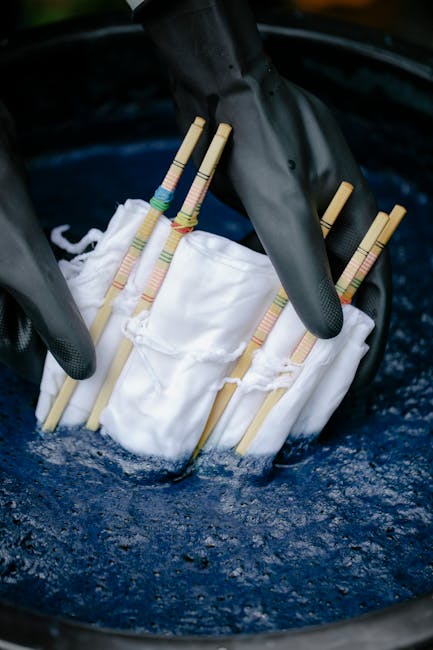A Day in the Life: Unveiling the Charm of a Japanese Hardware Tool Store

A Day in the Life: Unveiling the Charm of a Japanese Hardware Tool Store
Ah, konnichiwa, fellow design aficionados and lovers of practical beauty! Today, let's embark on a little journey, a peek behind the curtain of a space I find endlessly fascinating: the typical Japanese hardware tool store. Forget the sterile, sprawling aisles of your big-box retailers. These stores, often family-run and deeply rooted in their communities, are mini-universes of craftsmanship, efficiency, and quiet artistry. I'm utterly captivated by them, and I'm thrilled to share what a typical workday might look like within their walls.
Sunrise and Setting the Stage: Preparing for the Day

The day begins before the shop officially opens, usually well before the sun fully illuminates the meticulously arranged shelves. This isn't just about unlocking the door; it's about preparing a welcoming and inspiring space for the day ahead.
- The Gentle Sweep: Forget harsh industrial cleaning. Think of a ritualistic sweep of the floor, a cleansing of the energy, ensuring that the space is pristine and ready to receive customers. Every grain of dust is a distraction from the tools themselves.
- The Inventory Inspection: A careful check of the shelves is crucial. Are the tools neatly arranged? Are any items running low? This isn't just stocktaking; it's an assessment of presentation. Each tool should be displayed in a way that highlights its function and beauty.
- Polishing the Gems: Certain items, particularly those made of steel or brass, might receive a quick polish. A gleaming saw blade or a beautifully aged hammer head catches the light and invites closer inspection. It's about showcasing the tool's potential.
- The Art of Arrangement: Japanese aesthetics place a high value on order and harmony. The tools are often arranged by type, size, and even color, creating a visual symphony that is both pleasing to the eye and incredibly practical. Think of it as controlled chaos, a beautiful intersection of function and form.
Welcoming the Community: Customer Interaction and the Art of Service

Once the store opens, the focus shifts to the heart of the business: the customers. But this isn't just a transactional exchange; it's an opportunity to build relationships, offer expert advice, and share a passion for craftsmanship.
- The Warm Greeting: A heartfelt "Irasshaimase!" (Welcome!) greets each customer as they enter. It's a standard greeting, but delivered with genuine warmth and sincerity. This immediately sets a tone of respect and attentiveness.
- Understanding the Need: The shopkeeper doesn't just wait for customers to ask for something. They observe, inquire, and listen intently to understand the customer's needs. What project are they working on? What materials are they using? What challenges are they facing?
- Offering Expert Advice: This is where the real magic happens. The shopkeeper is a veritable encyclopedia of knowledge, able to recommend the perfect tool for the job, offer tips on technique, and even troubleshoot problems. This expertise is invaluable, especially for beginners.
- Demonstrating the Craft: It's not uncommon for the shopkeeper to demonstrate the proper use of a tool. They might show you the perfect angle for sharpening a chisel, the precise movement for using a hand plane, or the best way to secure a joint. It's a hands-on learning experience that is both informative and inspiring.
- The Language of Quality: Japanese hardware tool stores often prioritize quality over price. The shopkeeper might explain the benefits of a particular steel alloy, the precision of a hand-forged blade, or the durability of a certain type of wood. They understand that investing in quality tools is an investment in craftsmanship.
The Heart of the Matter: Tool Maintenance and Repair

A Japanese hardware tool store isn't just a place to buy tools; it's a place to care for them. Tool maintenance and repair are integral parts of the business, reflecting a deep respect for the value and longevity of these instruments.
- Sharpening Services: Perhaps the most common service offered is sharpening. Whether it's knives, chisels, saws, or planes, the shopkeeper possesses the skill and equipment to restore their edge to razor sharpness. This is an art form in itself, requiring years of practice and a deep understanding of metalworking.
- Handle Replacement: A broken handle doesn't mean the end of a tool's life. The shopkeeper can often replace the handle, restoring the tool to its former glory. They might even offer a selection of different handle materials and styles, allowing the customer to customize their tool.
- Minor Repairs and Adjustments: From tightening loose screws to realigning blades, the shopkeeper can handle a variety of minor repairs and adjustments. This ensures that the tools are functioning optimally and prolongs their lifespan.
- The Philosophy of Repair: Repair is seen as a virtue, a way to reduce waste and preserve valuable resources. It's a rejection of the throwaway culture and an embrace of sustainability.
The Daily Grind: Inventory Management and Procurement

While customer interaction and tool maintenance are central to the experience, a significant portion of the workday is devoted to the less glamorous but equally essential tasks of inventory management and procurement.
- Tracking Sales and Stock Levels: The shopkeeper meticulously tracks sales and stock levels, ensuring that they have the right tools in the right quantities. This requires a keen eye for detail and a deep understanding of customer demand.
- Ordering New Inventory: Sourcing high-quality tools is a crucial part of the job. The shopkeeper might work directly with manufacturers, artisans, or wholesalers to secure the best possible products.
- Negotiating Prices: Like any business owner, the shopkeeper needs to negotiate prices with suppliers. This requires strong communication skills and a deep understanding of the market.
- Receiving and Inspecting Shipments: When new shipments arrive, the shopkeeper carefully inspects each item to ensure that it meets their high standards of quality. Any damaged or defective items are returned to the supplier.
- Updating the Point-of-Sale System: In today's digital age, even traditional hardware tool stores rely on point-of-sale systems to track sales, manage inventory, and generate reports. The shopkeeper needs to be comfortable using these systems.
The Essence of Japanese Craftsmanship: Sourcing and Selecting Tools

The tools themselves are, of course, the stars of the show. The process of sourcing and selecting these tools is driven by a deep appreciation for Japanese craftsmanship and a commitment to quality.
- Prioritizing Local Artisans: Whenever possible, the shopkeeper will prioritize tools made by local artisans. This supports the local economy and preserves traditional crafts. These tools often possess a unique character and quality that is unmatched by mass-produced items.
- Seeking Out Quality Materials: The materials used in the tools are just as important as the craftsmanship. The shopkeeper will seek out tools made from high-quality steel, durable wood, and other long-lasting materials. They understand that the quality of the materials directly impacts the tool's performance and longevity.
- Evaluating Design and Functionality: The shopkeeper carefully evaluates the design and functionality of each tool. Is it ergonomic and comfortable to use? Is it well-balanced and easy to control? Does it perform its intended function effectively and efficiently?
- Considering Aesthetics: While functionality is paramount, aesthetics are also important. The shopkeeper appreciates tools that are not only well-made but also beautiful to look at. A well-designed tool can be a source of inspiration and joy.
- Building Relationships with Suppliers: The shopkeeper cultivates strong relationships with their suppliers, visiting workshops, attending trade shows, and building personal connections. This allows them to stay informed about new products, negotiate better prices, and ensure the quality of their inventory.
Beyond the Tools: Cultivating a Sense of Community

The best Japanese hardware tool stores are more than just retail outlets; they are community hubs. They serve as gathering places for craftspeople, DIY enthusiasts, and anyone with a passion for making things.
- Offering Workshops and Classes: Some stores offer workshops and classes on various woodworking and metalworking techniques. This provides an opportunity for customers to learn new skills, connect with other enthusiasts, and deepen their appreciation for craftsmanship.
- Hosting Demonstrations and Events: The shopkeeper might host demonstrations of new tools or techniques, or organize events to celebrate local artisans. These events help to create a sense of community and foster a shared passion for making.
- Providing a Resource Library: Some stores maintain a library of books, magazines, and other resources related to woodworking, metalworking, and other crafts. This provides customers with access to valuable information and inspiration.
- Serving as a Meeting Place: Even without formal events, the store can serve as a meeting place for people with shared interests. Customers might come in to chat with the shopkeeper, share their projects, or simply browse the tools and soak up the atmosphere.
- Supporting Local Charities: Many Japanese businesses are deeply committed to supporting their local communities. The hardware tool store might donate tools or supplies to local charities, or participate in community events.
The Evening Ritual: Closing Up Shop and Reflecting on the Day

As the day draws to a close, the shopkeeper prepares to close up shop. This is another opportunity for reflection and preparation for the day ahead.
- The Evening Sweep: Another gentle sweep of the floor, a final cleansing of the space. This ensures that the shop is clean and inviting for the next day's customers.
- Inventory Restocking: Any items that were sold during the day are restocked, ensuring that the shelves are full and well-organized.
- Tool Maintenance: Any tools that were used for demonstrations or repairs are cleaned and maintained. This ensures that they are in good working order for the next day.
- Cash Reconciliation: The shopkeeper reconciles the day's sales, ensuring that the cash register is balanced.
- Security Measures: Finally, the shopkeeper secures the premises, locking the doors and windows and setting the alarm.
The Beauty of Simplicity: A Lesson in Japanese Aesthetics

A visit to a Japanese hardware tool store is more than just a shopping trip; it's an immersion in Japanese aesthetics. The emphasis on quality, functionality, and craftsmanship reflects a deep appreciation for the beauty of simplicity.
- Wabi-Sabi: The acceptance of imperfection and impermanence. The shopkeeper embraces the natural aging of tools, recognizing that each scratch and dent tells a story.
- Shibui: The appreciation of understated elegance. The tools are not flashy or ostentatious; their beauty lies in their functionality and simplicity.
- Ma: The importance of space and emptiness. The tools are arranged in a way that allows each item to breathe, creating a sense of calm and order.
- Kanso: The value of simplicity and minimalism. The shopkeeper avoids clutter and unnecessary ornamentation, focusing on the essential elements.
So, the next time you're seeking inspiration, consider a visit to your local hardware store – or, if you're lucky enough, a truly authentic Japanese one. Observe the meticulous arrangements, listen to the wisdom shared, and appreciate the enduring beauty of well-crafted tools. You might just find a new appreciation for the simple pleasures of everyday life, and perhaps even discover your inner artisan. Sayōnara for now, and happy crafting!
Post a Comment